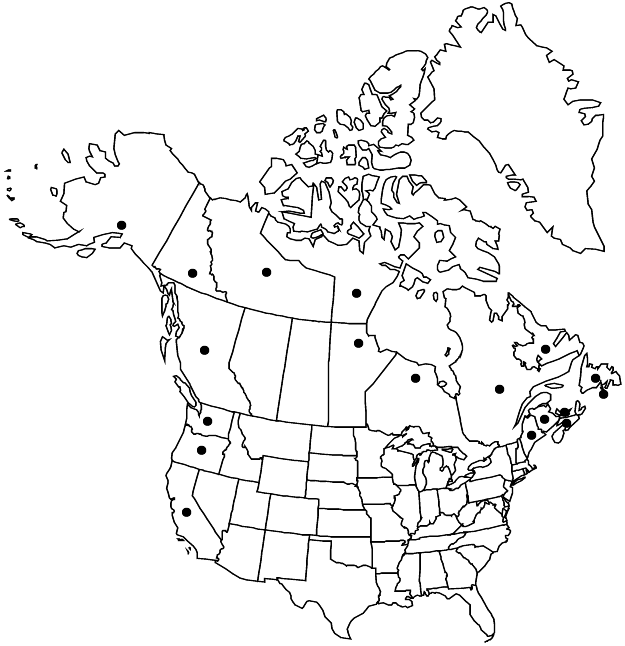Polygonum fowleri
Rhodora 4: 67, plate 35, figs. 14, 15. 1902.
Plants green, sometimes purple-tinged, homophyllous or heterophyllous, sometimes subsucculent. Stems prostrate to ascending, sometimes zigzagged, branched from base, not wiry, 5–50 cm. Leaves: ocrea 2.5–12 mm, proximal part funnelform, distal part soon disintegrating, nearly completely deciduous or fibers persistent; petiole 2–7 mm; blade light green, sometimes purple-tinged, elliptic to elliptic-obovate or obovate, 8–30 (–50) × 4–15 (–25) mm, margins flat, apex acute to obtuse; middle stem-leaves 1.1–2.1 (–3.4) times as long as adjacent branch leaves, distal leaves overtopping flowers. Inflorescences axillary; cymes uniformly distributed, 1–7 (–10) -flowered. Pedicels enclosed in or sometimes exserted from ocreae, 1–2.5 mm. Flowers closed; perianth (2.2–) 2.5–4.5 mm; tube 23–38% of perianth length; tepals initially overlapping, pushed apart as achene develops, green, margins white to pink, petaloid, not keeled, oblong, cucullate; midveins branched, sometimes not visible; stamens 6–8. Achenes exserted from perianth, brown to dark-brown, broadly ovate to ovatelanceolate, (2–) 3-gonous, (1.8–) 2–3.7 (–4.5) mm, faces subequal or unequal, flat to concave, apex beaked, edges strongly concave, shiny to dull, roughened, rarely obscurely tubercled; late-season achenes common, 4–6 mm.
Distribution

B.C., Man., N.B., N.S., N.W.T., Nunavut, Ont., P.E.I., Que., Yukon, Alaska, Calif., Maine, Oreg., Wash.
Discussion
Subspecies 2 (2 in the flora).
Selected References
None.
Key
| 1 | Achenes broadly ovate, (2.5-)3-3.7(-4.5) mm; perianth 3-4.5 mm | Polygonum fowleri subsp. fowleri |
| 1 | Achenes ovate-lanceolate, (1.8-)2-2.5 (-3.1) mm; perianth (2.2-)2.5-3.3(-3.5) mm | Polygonum fowleri subsp. hudsonianum |
"/2" is not declared as a valid unit of measurement for this property.